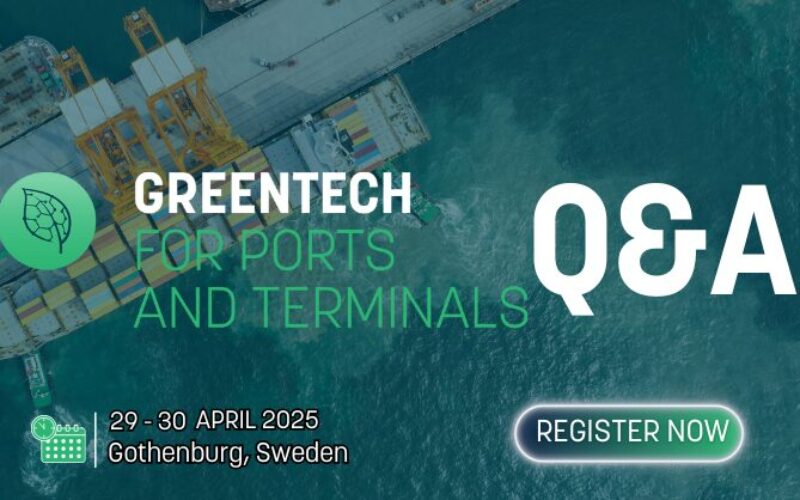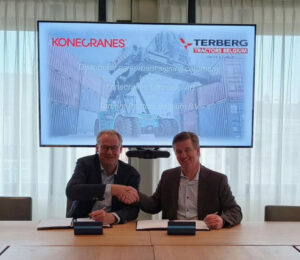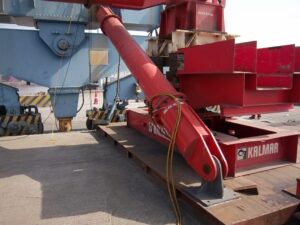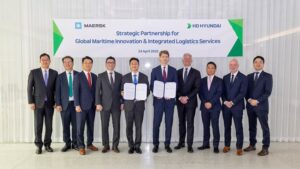The next edition of GreenTech for Ports and Terminals is just around the corner, and we’re thrilled to spotlight some of the visionary speakers who will be sharing their expertise on the industry’s path to a greener, more sustainable future.
Today, we sit down with Dr Jérôme Besancenot to discuss HAROPA PORT’s 2040 carbon-neutral goal, driven by digital innovation, electrification, renewables, and global collaboration.
Join us on 29 – 30 April 2025 in Gothenburg and be part of the conversation shaping the future of our industry!
What are the most significant innovations or strategies you see driving decarbonisation in ports and maritime logistics?
HAROPA PORT, which brings together the ports of Le Havre, Rouen, and Paris, is implementing an ambitious environmental strategy to decarbonise the Seine corridor. On one hand, it aims to foster the emergence and development of decarbonised logistics chains along the Seine axis and beyond. On the other hand, it seeks to welcome new industries to the port area that will contribute to the country’s decarbonisation while ensuring long-term autonomy, particularly in terms of energy. Its goal is to achieve carbon neutrality by 2040, while making transport and port services more sustainable and competitive.
Among its key initiatives is the Environmental Shipping Index (ESI), which encourages ships to adopt environmentally friendly practices in line with IMO regulations on pollutant emissions. HAROPA PORT also participates in the World Ports Climate Action Program, a collaboration between 12 international ports focused on reducing maritime sector emissions. Additionally, the port is actively involved in developing hydrogen and CO2 value chains to support the decarbonisation of the Seine corridor.
The port also relies on digital transformation to optimise its operations and reduce its carbon footprint. The use of artificial intelligence, Digital Twins, and other advanced tools facilitates the decarbonisation of port activities. Enhancing Port Community Systems (PCS) improves coordination between port stakeholders, particularly through Just-in-Time (JIT) navigation, which helps reduce ship emissions.
Decarbonising port terminals while enhancing their competitiveness is a key strategic challenge. Electrifying equipment and vehicles enables the replacement of diesel engines with electric or hybrid alternatives, reducing emissions by up to 95 per cent. Additionally, progress is being made in integrating renewable energy and storage solutions, including the installation of solar panels and wind turbines to generate clean energy. Shore power connections enable ships to plug into the electrical grid while docked, significantly reducing emissions from auxiliary engines. Since 2019, electric charging stations have been progressively deployed along the Seine’s river quays for barges and river convoys. HAROPA PORT is now completing the electrification of its Cruise Terminal, whose onshore power infrastructure will be commissioned in 2026.
HAROPA PORT is also advancing its energy transition with large-scale industrial projects related to hydrogen production, synthetic fuels, and CO2 capture. Digitalisation and operational optimisation, through the Internet of Things (IoT), 5G, Digital Twins, and port management systems, enable real-time logistics optimisation and improved environmental performance.
Finally, a strategic breakwater project at the Port of Le Havre to protect inland navigation was launched in March. This initiative is expected to increase river transport volumes on the Seine by at least 50 per cent, thereby reducing road congestion and associated emissions.
These strategies and innovations are crucial for ensuring sustainability and reducing the carbon footprint of maritime and port transport, while boosting its competitiveness. HAROPA PORT remains a driving force in promoting environmentally friendly practices and implementing innovative solutions for a greener future.
How is your company supporting the transition to greener operations—whether through technology, infrastructure, or collaboration?
HAROPA PORT is implementing several concrete projects to promote decarbonisation and improve environmental sustainability. Among these initiatives, the electrification of equipment and vehicles is a priority. For example, a project to supply shore power to cruise ships in Le Havre will equip three berths by 2025, reducing CO₂ emissions by 15,000 tons per year. Additionally, solar panels in Gennevilliers produce 90,000 kWh annually, and the Siemens Gamesa plant in Le Havre is dedicated to offshore wind energy. By 2025, HAROPA PORT aims to generate 20 MW of solar energy within its territory.
HAROPA PORT is also committed to the development of hydrogen and synthetic fuels. A partnership with VERSO ENERGY aims to create a hydrogen and synthetic fuels plant by 2029, with an annual production of over 50,000 tons of hydrogen. Furthermore, HAROPA PORT is collaborating with Total Energie and Air Liquide to develop carbon capture projects, targeting the storage of 1.3 million tons of CO₂ per year by 2027.
Collaborative Research represents another key factor to accelerate the transition to cleaner operations. In this regard, HAROPA PORT is a founding member of the European Project MAGPIE, which—together with 45 other partners—works to define the “Green Port” of the future.
Digital transformation is another key focus of HAROPA PORT’s strategy to accelerate decarbonisation. The use of AI, Digital Twins, and other technological tools helps optimise port operations and reduce their carbon footprint. The development of the Port Community Systems (PCS) S)One (operated by SOGET) enhances coordination among port stakeholders, particularly through Just-in-Time (JIT) navigation, which reduces ship emissions. An operational Digital Twin strengthens safety and streamlines operations at the quay. It optimises the capabilities of the PCS by sharing real-time data on all stages, from docking to the departure of ships.
HAROPA PORT also integrates research and development with a private blockchain solution, easySecure, stemming from work with easyport, a startup co-founded by SOGET and HAROPA PORT. This technology enhances the fluidity of port passage by ensuring optimal traceability of information related to smooth port calls.
Easyport has also developed two solutions to complement the port’s Digital Twin. The first, MyETA, uses AI to calculate and predict the arrival time of ships and the departure of goods, enabling logistics stakeholders to optimise their collection process and reduce their carbon footprint. Additionally, a cargo traceability solution, MyTnT, has been implemented to track containers between HAROPA PORT’s ports. This solution provides visibility on multimodality and covers the entire Seine Axis, both for imports and exports. As a result, it contributes to the decarbonisation of freight transport in the Paris metropolitan area.
Finally, SOGET, in collaboration with TK’Blue, offers carriers and shippers a solution called S)Green. This tool enables companies to measure and reduce the carbon footprint of their transport by automatically and accurately calculating greenhouse gas (GHG) emissions related to logistics operations. It is a key lever for businesses seeking to adopt a credible low-carbon trajectory.
Why is it important for industry professionals to attend Greentech Europe 2025, and what key takeaways can they expect from the event?
GreenTech is a truly inspiring event for advancing the complex challenge of decarbonising ports. It is a unique opportunity to meet a diverse range of institutional players, researchers, and industry professionals involved in the port and digital sectors. It fosters reflection, the acquisition of in-depth knowledge, and the generation of new ideas.
It is also a valuable opportunity to discover innovative and digital initiatives dedicated to the port sector, through the presentation of concrete solutions that can help ports develop their decarbonisation strategies towards net-zero more effectively and meaningfully.
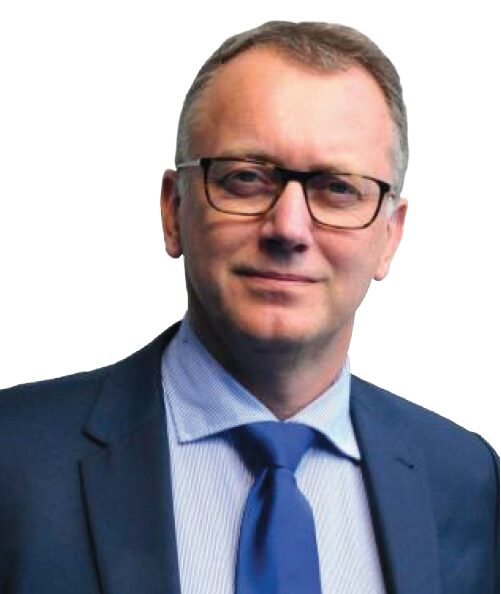
Dr Jérôme Besancenot, who holds a Ph.D. in Computer Science from Paris University, currently serves as the Digital Transition Project Director at HAROPA PORT (which encompasses the ports of Le Havre, Rouen, and Paris). He is also the Managing Director of easyport, a digital startup jointly developed by HAROPA PORT and SOGET. He plays a pivotal role in HAROPA PORT’s digital transformation, a key driver for the development of port activities, reindustrialisation, the transition to multimodal freight solutions, and the ecological and energy transition.

